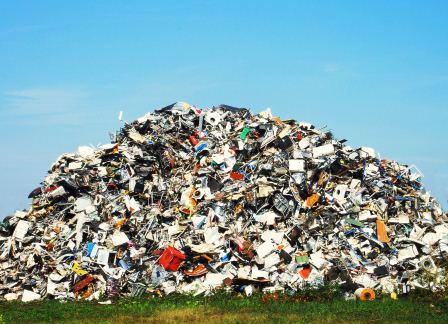
垃圾星球求解救
<a href="../201812/t20181229_903800.html">2017年的日全食激发了大众的科学热情</a>(科学60S)
0:00/0:00
最新发布时间:
2014-12-06
Can the World Reach Peak Waste?
垃圾星球求解救
If the world's growing population embraces a throwaway culture, human civilization may drown in garbage.
如果日益增长的世界人口全都张开双臂拥抱“丢弃文化”,人类文明很快便会淹没在垃圾里。
撰文/播音 戴维•别洛(David Biello)
翻译 程孙雪子
校对 李轩
I probably throw away my own weight in garbage each month. That's the average for an American city dweller.
每个月,我大概都会扔掉与自己身体差不多重量的垃圾,而这基本上是美国城市居民的平均“开销”。
Urbanites like me create roughly twice as much trash as our rural counterparts. We city folk the world over produce three million metric tons of garbage each day.
像我这样的城市居民制造的垃圾,几乎相当于乡镇居民的两倍。世界上所有城市居民每天制造的垃圾达到了300万公吨。
And in the next decade or so, the amount of garbage worldwide could double. That's partly because more and more of us are living in cities — and there are more and more of us around.
未来十年,世界上的垃圾总量会翻上一番。城市居民的增加是造成这种情形的部分原因,而全球人口的总量也在不断上升。
In order not to live amidst ever higher landfills like in WALL-E, people will have to waste less. This can be done: The average Japanese urbanite makes just a third the trash produced by the average American, like yours truly.
如果不想像《机器人总动员》中的瓦力那样生活在巨型垃圾堆中,我们就必须少制造些垃圾。而这完全可以做到:日本城市居民的平均垃圾制造量就仅为美国的三分之一。
We'll all have to turn Japanese if the world is to reach so-called “peak waste” before 2100. Peak waste refers to some highest ever amount of garbage produced daily, which then, it’s hoped, begins to fall. On current pace, garbage production could rise beyond 11 million metric tons per day by the end of this century. If we haven’t peaked by then, we could be living in garbage
如果地球在2100年前达到所谓的“垃圾顶点”,我们就都必须像日本人那样生活了。“垃圾顶点”是指每日垃圾产量的最高值,我们期待,垃圾产量在此之后会开始下降。以目前的速度来看,到本世纪末,地球每日的垃圾产量会超过1100万公吨。如果那时还没有到达“垃圾顶点”,我们就真的要生活在垃圾堆中了。
查看更多
©2011- 版权所有:中国数字科技馆
未经书面许可任何人不得复制或镜像
京ICP备11000850号-1 京公网安备11010502039775号
京公网安备11010502039775号
信息网络传播视听节目许可证0111611号
国家科技基础条件平台
未经书面许可任何人不得复制或镜像
京ICP备11000850号-1
 京公网安备11010502039775号
京公网安备11010502039775号 信息网络传播视听节目许可证0111611号
国家科技基础条件平台

















